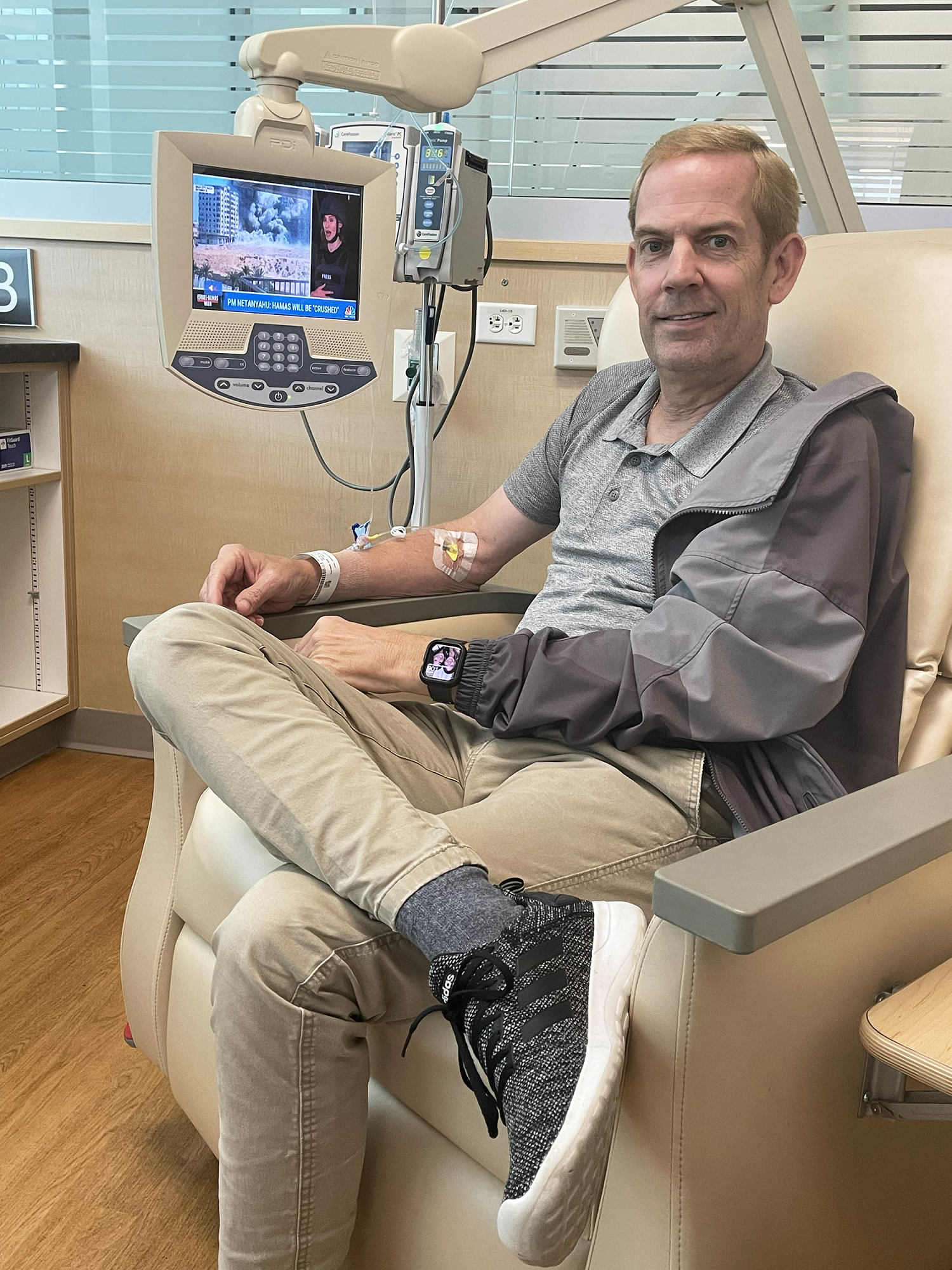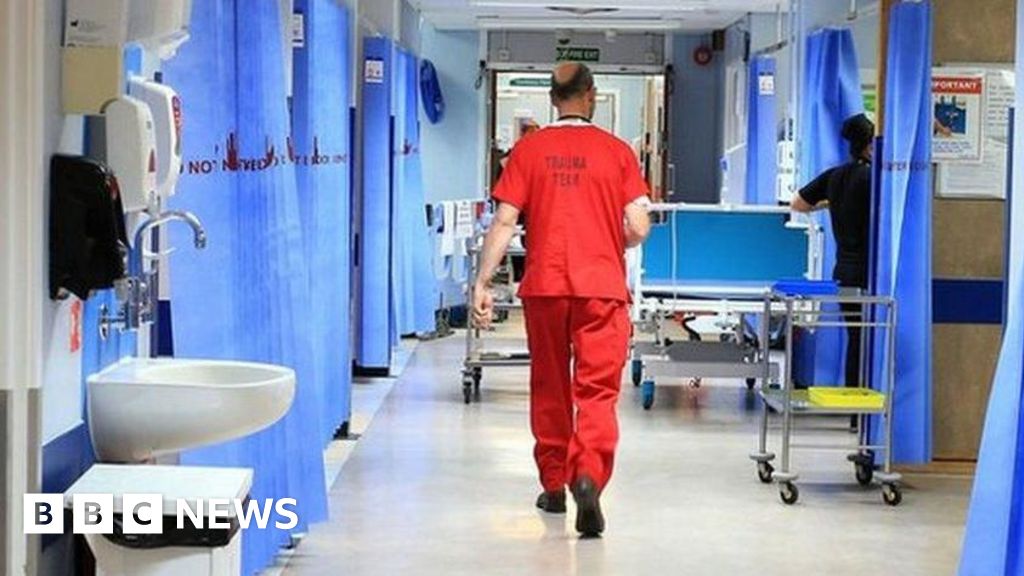During a doubles tennis match, Rick O’Keefe hit a hard serve and returned the ball powerfully when his “collarbone snapped.” “I was playing with three other guys and one of them was a doctor and he’s like, ‘Whoa you need to go to the ER,’ because my arm was flailing,” O’Keefe, 53, of Maumelle, Arkansas, tells TODAY.com.
“You could just tell it was really messed up.” While doctors determined he broke his right clavicle, they wanted to do a follow-up MRI to understand why. The reason felt startling — O’Keefe had Stage 4 kidney cancer that had spread to his collarbone.

“They mentioned the ‘C word’ and I was like, ‘What’s the C word,’” he says. “I didn’t even think cancer. It was just so far from my mind.
” In May 2023, O’Keefe became injured during his match. While his arm didn’t seem to be out of the socket, he could tell it was “really messed up.” He visited the emergency room and doctors ordered an X-ray to diagnose him with a broken collarbone and recommended he wear a sling to help it heal.
“I knew from the pain and how it was throbbing that something else was wrong,” he says. O’Keefe’s doctor recommended an MRI after the swelling lessened “to try to pinpoint what was actually wrong with the clavicle.” After six weeks, he underwent an MRI where the radiologist spotted something unusual.
“The bone was darker than the normal white,” he says. “It threw up a red flag.” In July, O’Keefe underwent a bone biopsy, which confirmed he had cancer in his collarbone.
“That’s why the bone broke with no fall, no impact,” he says. “It was just me striking a tennis ball.” But, the cancer did not originate in his bones.
It was a renal cell carcinoma, otherwise known as kidney cancer. When doctors began planning his treatment, they found another surprise — his kidneys were attached to each other with a band of tissue, what’s called a horseshoe kidney. “The tumor was .
.. roughly the size of the racket ball,” O’Keefe says.
“It was pretty big.” The tumor was behind his belly button where the two kidneys were attached. Doctors decided to have O’Keefe undergo chemotherapy first to try to shrink the tumor to make it easier for a surgeon to remove it.
He first started with chemotherapy infusion and then switched to chemotherapy pills. By December 2024, his tumor was the size of a golf ball, and doctors thought it could be removed easily. But neither of the surgeons O’Keefe met with had ever performed surgery on a horseshoe kidney before.
“It was a little more difficult,” he says. “We didn’t feel comfortable until we found somebody that had actually done (surgery) on some horseshoe kidneys.” This winter, O’Keefe’s fiancé, Elly Rumbach, did some research and found a doctor at Temple University Hospital who had experience performing surgery on people with horseshoe kidneys.
“We did a three-way Zoom call with him and he said everything we wanted to hear,” O’Keefe says. Horseshoe kidneys are rare and don’t cause any symptoms, for the most part. “The most common (kidney) anomaly is a horseshoe kidney, where you have a left and a right kidney, but they’re fused at the lower portion of it, the isthmus,” Dr.
Daniel Eun, chief of robotic surgery and director of minimally invasive robotic urologic oncology and reconstructive surgery at Temple University Hospital, tells TODAY.com. People might find out their kidneys are connected because they undergo a scan for another problem.
O’Keefe would have never known he had a horseshoe kidney without his cancer diagnosis. Even though Eun has performed surgery on many horseshoe kidneys, O’Keefe’s was unique. “I’ve never really found a tumor — except until Rick — that’s truly in the middle between the left and right kidney,” Eun explains.
“It was right on the isthmus. I couldn’t call it a left-side tumor or a right-side tumor.” Eun realized that removing the tumor meant he would need to separate the kidneys to obtain clean margins.
“I broke the isthmus,” he says. “I separated his kidney into a left and right kidney and separately repaired each side so it wouldn’t bleed out.” Eun used a robot for the surgery, making it minimally invasive.
That reduces recovery time and people have smaller incisions. “A flank incision is a horrible thing to recover from,” Eun says. “A patient can leave the hospital the same day as they often do (with robotic surgery).
” People with kidney cancer often do not experience symptoms, much like O’Keefe. Signs can include: “Sometimes (kidney cancers) will be incidentally found because someone went to the emergency room,” Eun says. “The majority of kidney tumors are asymptomatic.
” People can experience bone pain if they have a late-stage diagnosis, he adds. Being diagnosed with cancer after a broken bone is “an unusual way to be discovered but it’s not rare,” Eun says. “There are people that are found to have metastatic kidney cancer in that way.
” In O’Keefe’s case, his cancer doesn’t seem to be “widespread.” “He just had that one area in his collarbone that was discovered, and he responded really well to systemic therapy,” Eun says. “His diagnosis might be a little more favorable because he does not have what we think is widespread metastatic disease.
” Normally a right-handed player, O’Keefe taught himself to play tennis left-handed. His dedication to playing kept him motivated when things felt tough during treatment, especially when he lost his appetite during chemotherapy. “At first I didn’t eat very well,” he says.
“Then I just told myself, ‘Rick if you want to play tennis you have to eat.’ So, I tricked my mind that all the food tastes good.” Even while going through chemotherapy, he continued playing.
“I was very successful last year playing left-handed,” he says. “I didn’t miss a tournament. I played league.
I play with my fiancé, we played mixed ...
I just didn’t want this to slow me down.” In early March 2025, O’Keefe underwent surgery that removed his tumor and separated his kidneys. His recovery went well and he's looking forward to getting back on the court.
He’s sharing his story to offer optimism to others facing a tough diagnosis. “You’ve got to have hope and you’ve got to have faith and you’ve got to be preserving,” he says. Meghan Holohan is a digital health reporter for TODAY.
com and covers patient-centered stories, women’s health, disability and rare diseases..
Health

While playing tennis, man, 53, broke his collarbone. It led to a surprising diagnosis

After breaking his collarbone, man, 53, learned he had Stage 4 kidney cancer and a horseshoe kidney. Surgery involved separating kidneys and removing the tumor.















